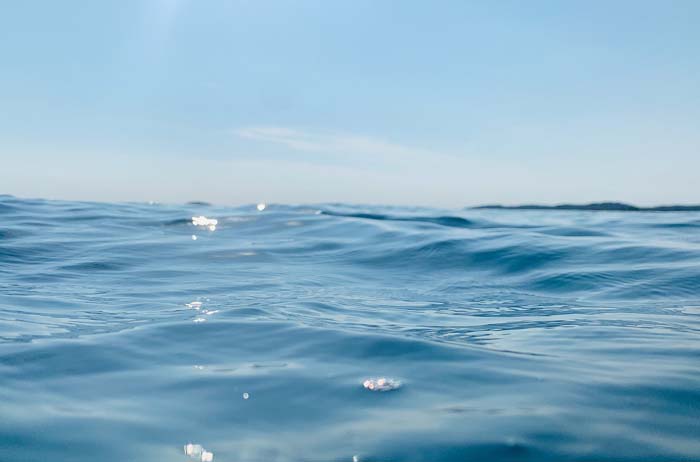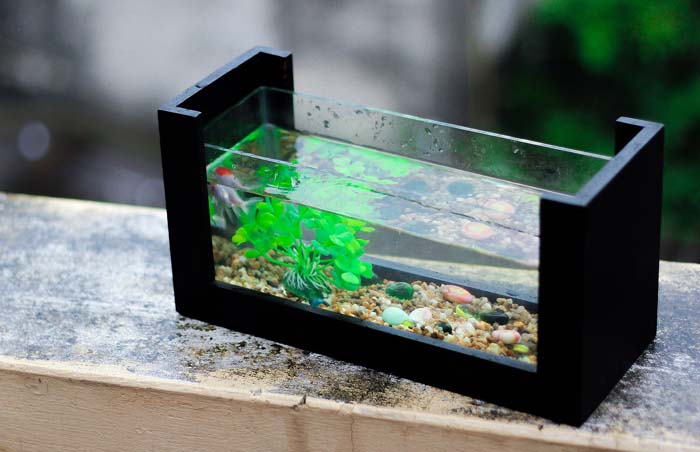
The sheer variety of aquariums available could overwhelm someone new to the hobby. There are a few other choices besides the obvious freshwater vs. saltwater dichotomy. The brackish tank is among the most popular choices. Saltwater swamps, estuaries, and coastal streams are natural habitats for brackish water, a mixture of saltwater and freshwater. Start a brackish tank if you’re an experienced aquarium hobbyist seeking a new challenge or if you’re seeking a novel setup for your next aquarium.
Here’s how to setup a brackish tank
Almost all the steps in setting up a freshwater tank also apply to a brackish tank. Anyone can accomplish it with a basic understanding of cycling and the nitrogen cycle. You’ll only need a tank, lighting, marine salt, and a filter (HOB, reverse flow undergravel, undergravel, or canister are all good options). It all comes down to personal preference and a way to cover or structure the tank.
Like any other aquarium, a brackish tank filtration system requires biological and mechanical filters. It is up to you to figure out how to do this. Once you’ve cycled the tank, you’re good to go. The procedure is the same when using a brackish tank. The difference is that you must adjust the salt concentration before getting the target’s specific gravity.
Regular table salt or aquarium salt is a common blunder when creating a brackish habitat. Doing so is different from employing a genuine marine mix. Sodium chloride, sometimes with iodide added, is the standard salt for aquariums. The long-term health of your aquarium depends on natural saltwater, which is a more complicated solution, including many other trace elements.
- If necessary, set up the aquarium stand and locate a suitable place for the tank.
- Wash the tank and its parts with soap-free water. Make sure to rinse the substrate numerous times if you’re using crushed coral or aragonite. This will help reduce cloudy water problems.
- After assembling the stand, set up the aquarium and fill it with decorations, equipment, and substrate.
- Add dechlorinated water to the tank.
- To gradually transition plants and fish from fresh to brackish water, add regular drinking water without salt, as with any other water.
- Add two tablespoons of reef salt per gallon of water to 80% of the tank’s fresh water if you’d like brackish water right away. Allow the salt to dissolve through the powerhead circulation or filter for about eight hours, then measure the specific gravity.
To attain the appropriate specific gravity, keep adding marine salt and fresh water according to the refractometer measurement.
- Install the aquarium lid and light.
To ensure the aquarium’s ecosystem can handle the harmful ammonia that fish will produce, you should cycle the tank before introducing any fish if it is a new setup. Although plants may be less readily utilized in brackish water, the procedures for cycling a freshwater tank are identical to those for a brackish tank.
 How much salt do I need for a 10-gallon brackish tank?
How much salt do I need for a 10-gallon brackish tank?
Use one tablespoon for every ten gallons of water in a brackish tank housing plants or sensitive species to be safe.
What is the use of salt?
Of utmost importance, salt in aquariums aids freshwater fish in maintaining proper osmoregulation. The physiological mechanism by which fish manage their internal water and salt levels is osmoregulation. There is a greater concentration of salt within fish than in their natural habitat. Due to osmosis, a dissolved material (salt) moves from a high-concentration area (the fish) to a low-concentration area (the water) through a semipermeable surface. As a result, freshwater fish quickly lose salt and take in water. Because of this constant give-and-take, adding aquarium salt to a tank improves the health of freshwater fish.
The slime coat of fish in freshwater is strong and healthy because of aquarium salt. Like human skin, a fish’s slime coat is a first line of defense against parasites and bacteria.
The Pros and Cons of a Brackish Tank
Placing some livebearers in a brackish tank can provide them with all the essential water parameters and trace minerals for their maximum health. Brackish water also makes many freshwater parasites and diseases impossible to live with. So, to keep expenses down and produce healthier fish, fish farms frequently breed livebearers in a mixture of salt and fresh water.
Furthermore, you can relax knowing that a brackish tank does not need an exact quantity of salt. Estuaries are places where streams and rivers meet the ocean; hence, brackish corals are accustomed to changing conditions, in contrast to saltwater reef corals. In a single day, they may encounter completely salt water and completely freshwater, depending on the weather and the tides. Your fish should be alright if the salt content is minimal.
On the flip side, a brackish tank does restrict your plant and animal choices. Additionally, most fish stores specialize in something other than brackish water. Thus, these species can be hard to find at times. Adding the correct amount of salt and measuring the water’s specific gravity are two more processes necessary for tank maintenance. Lastly, you can use a moist cloth to wipe off any remaining salt residue or salt creep in locations where water splashes out of your tank. Another option is to add craft mesh over the holes in the tank lid to reduce this problem.
Tips for setting up a brackish tank
Ensuring an optimal salinity level is crucial for the smooth operation of a brackish tank. Live plants and fish might not do well in an extremely high-salinity aquarium. However, species such as fiddler crabs might need more salt in environments with insufficient salt. You can keep an eye on the salt level in your aquarium in several ways. If you want to know the specific gravity of the water in your aquarium, you can use a hydrometer or a water test kit. Make sure you receive the correct hydrometer for your needs by researching several brands before you buy.
Choosing the right fish is another key to keeping a brackish tank alive and well. The combination of saltwater and freshwater is not optimal for tropical saltwater species. Also, not all freshwater fish species do well in brackish conditions. Be careful to read up on each species to ensure they can thrive in the specific conditions you have in mind for your brackish tank before you add any fish. Fish such as pufferfish, gobies, loaches, and catfish are suitable for brackish tanks. Platies, swordtails, and mollies are just a few livebearers that thrive in a brackish tank setting.
To keep a brackish tank in good working order, follow these steps on a regular basis.
- Check and maintain the water quality every day, week, and month.
- Filtration equipment needs weekly servicing.
- Always add warm freshwater to maintain the necessary salinity levels.
- Maintain a regular water-changing schedule.
- Use a UV steriliser to treat the water to protect your aquarium from potentially dangerous bacteria and viruses.
- Use a hydrometer or refractometer to ensure the salinity stays within the specified range.
- To clear your tank of algae, you should scrub the glass often.
- Since evaporation can raise the salinity in a brackish tank, monitoring the water’s salinity regularly is important.
Conclusion
When you think about all the interesting species you can start maintaining in a brackish tank, you’ll realize how much fun it can be. You may easily keep brackish tanks if you are good at maintaining freshwater aquariums. They are far easier to maintain than saltwater reef tanks.
Maintaining a brackish tank is a challenging task. Maintaining constant parameters requires some work. You must constantly acquire the appropriate tools and adhere to the recommended procedures.
